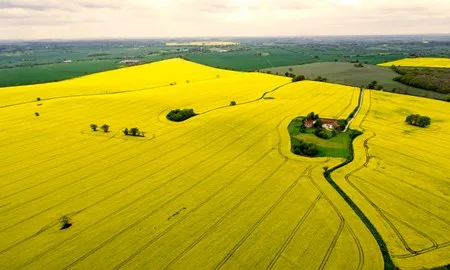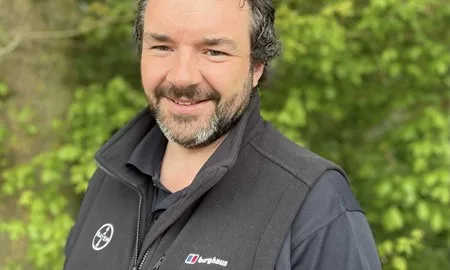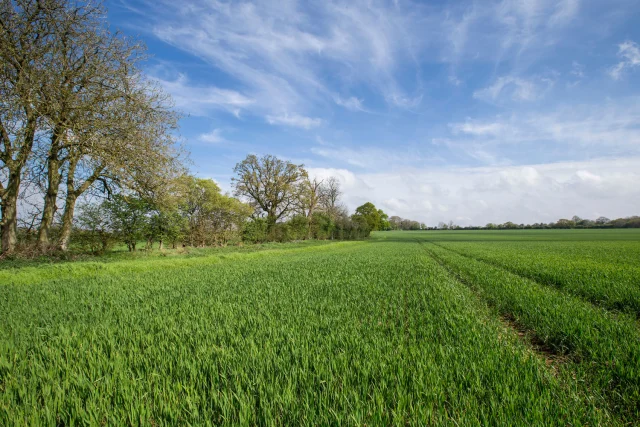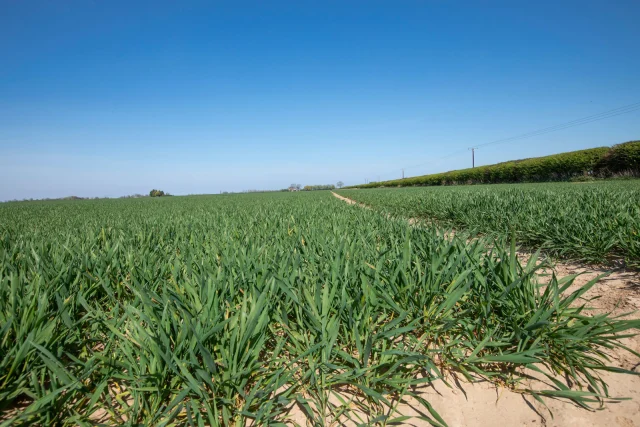Published on 31st July 2020
Local Insights
Five agronomy tips for Scottish growers to consider in August

CTM Grant Reid looks at preparations for next season in the August update.
Five agronomy tips for Scottish growers to consider in August Content
Crop progress
Winter barley harvest started in mid-July in Scotland, which is earlier than I can ever recall. At the time of writing, it’s a little too early to talk about yields, although crops in the area are looking OK, except very short. The lack of straw might prove problematic for livestock farmers.
Grant’s agronomy tips for August
1. Consider creating a stale seedbed before planting oilseed rape and wheat
Those who have cut winter barley early might consider some shallow cultivation depending on their establishment method to get a chit of any seeds that have come over the back of the combine and spraying off with Roundup (glyphosate) before putting in oilseed rape.
It’s amazing how much volunteer barley can come through the combine and appear in a crop of OSR, and especially this year because there are a number of cereal crops that will have secondary tillers producing small, feathery seeds that will blow right through the combine but still be viable. It will be worth getting shot of them and any weeds before establishing the OSR.
The same applies for growers following oilseed rape with winter wheat to take care of any volunteer oilseed rape and grassweeds, including volunteer barley from previous crops. There’s no on-label approvals for removing volunteer barley from wheat, so a stale seedbed is not a bad idea to get on top of these depending on weather, and any grassweeds like annual meadowgrass and bromes.
When buying seed for next season’s crop it is also worth asking where the seed has been grown from a weed control point of view. If it has been grown in Scotland there is a reduced chance of importing black-grass onto the farm, so it is at least worth asking the question.
2. Aim to get oilseed rape drilled by end of August
So far we haven’t had the huge issues with cabbage stem flea beetle that those south of the border have faced. Ideally, all oilseed rape should be drilled by the end of August, although if the weather is set fair you might be able to continue into the first 10 days of September.
Hybrid vigour to get crops through the ground can be helpful in Scotland, while some varietal resistance for light leaf spot is also useful. Our range of DK hybrids have a good range of characteristics to suit most situations.
We are also supporting growers with our improved Dekalb Establishment Scheme. In the event of crops of three varieties – DK Exstar, DK Extremus and DK Excited – failing to establish by the end of October, we will credit eligible growers with £100/bag.
If you do drill into September, hybrids and attention to detail with establishment become even more important.
3. Consider a cover crop on land destined for spring cropping
On land being harvested this summer and going into a spring crop, you could consider a green manure or cover crop instead of ploughing. There are plenty of options for species, establishment and destruction – from letting the frost kill it over winter to ploughing it in, chopping or spraying it off – but have a plan and know what you are trying to achieve.
Be careful with species choice – for example brassicas if you have other brassica crops in the rotation. Cereal-based cover crops can be established into September, other species perhaps need to be earlier – but also make sure it is destroyed early enough to not impact the following spring cereal establishment or yield.
Those with livestock, because of grass crops so far have been quite poor, growers could consider direct drilling stubble turnips to give livestock another feed and getting some manure in return.
The same applies if a grower is taking out grass, there’s a good opportunity to graze the grass low, spray it off and then direct drill stubble turnips into the dying sward, which works well for some growers. You get the muck from the livestock and also the organic matter from the dying sward going back into the soil.
4. Keep on top of blight and plan potato crop destruction
Although there have not been too many reports of outbreaks of blight so far this season, there were some blight alerts towards the end of July, as this is written, so make sure you keep on top of blight sprays and maintain seven day intervals.
Towards the end of the programme tuber blight becomes a higher focus, and there are fewer options that have activity against that form of blight. Infinito (propamocarb + fluopicolide) is one that does.
The first seed crops are being burned down and / or flailed. Without diquat this season, consider how you will destroy crops, whether it is just flail, spray or a combination of both. Most growers, I suspect, will use the combination but it will depend on weather and soil conditions.
On the whole potato crops look good currently, although virus pressure has been high, which might cause problems with marketing of seed crops potentially. Just a reminder this is the last year of use for Biscaya (thiacloprid) so make sure to use it up on one of the number of crops it is approved for before the expiry date.
5. Get farm-saved seeds tested before making decisions on seed treatments
If you are saving your own seed then it is worth getting seed tested by, for example, SASA in Edinburgh, to check for seed-borne diseases before using, and to understand whether and what the seed might need to be treated with. If the field has had some issues with disease during the season, such as net blotch in barley or Microdochium then it might be best not to use seed from that source.



